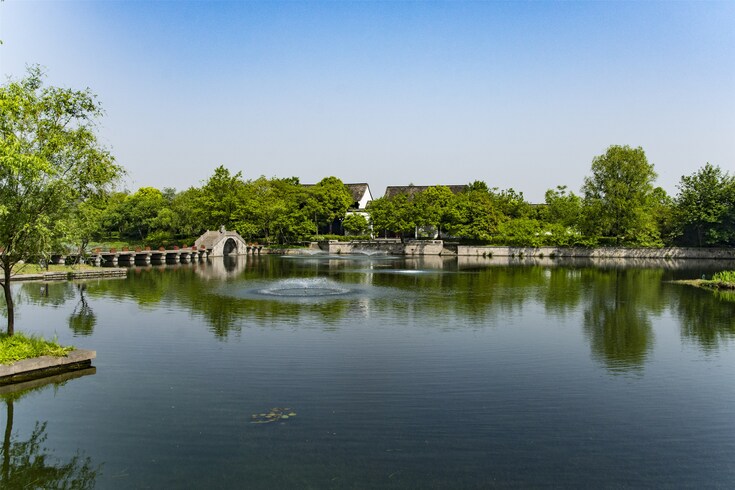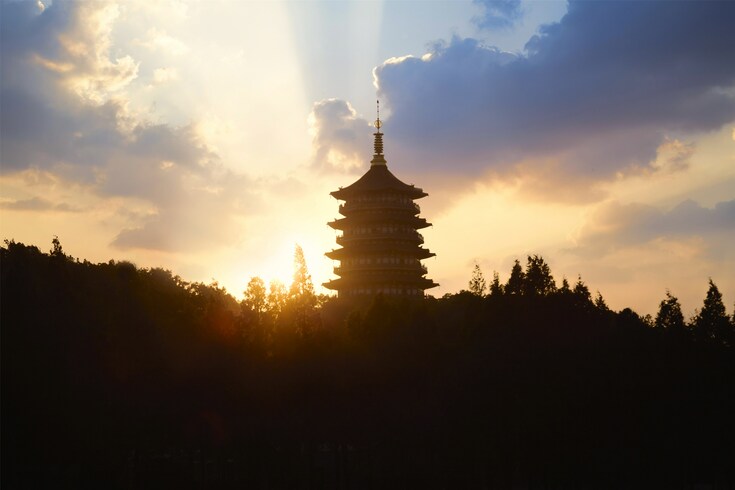Publish Time:2023-02-09 20:27:07Source:WTCF
【Introduction】:Located in the lower reaches of the Yangtze River on the south-eastern coast of China, or Hangzhou of Zhejiang Province to be more specific, the archaeological ruins of Liangzhu reveal the scale of an early regional state based on rice cultivation.
Located in the lower reaches of the Yangtze River on the south-eastern coast of China, or Hangzhou of Zhejiang Province to be more specific, the archaeological ruins of Liangzhu reveal the scale of an early regional state based on rice cultivation.

(Source: quanjing.com)
Thought to have served as a political, economic, cultural and religious center of China, the property is composed of four areas – the Area of Yaoshan Site, the Area of High-dam at the Mouth of the Valley, the Area of Low-dam on the Plain and the Area of City Site; and includes mainly the palace, the inner city and the outer city. The core area is surrounded by functional zones, storage areas, workshops, water transportation systems and aristocratic cemeteries.

(Source: quanjing.com)
A great number of exquisite jade ritual vessels with typical "deity and animal mask patterns" have been excavated, showcasing the peak of prehistoric jade-ware production in China's last Neolithic jade culture period. Unearthed relics and utensils used in manufacturing, household, military and so on have been discovered as well, serving as a testimony of an early organized state featuring an agrarian economy.

(Source: quanjing.com)
The Archaeological Ruins of Liangzhu City provide profound and compelling evidence that Chinese civilization started 5,000 years ago, 1,000 years earlier than previously thought to be more accurate, which shows the achievements of agricultural civilization in the Yellow River and the Yangtze River basins during that period.
E-Mail Login|Contact Us|Careers|Legal disclaimer
世界旅游城市联合会版权所有 备案号:京ICP备19050424号-1
Our legal counselors: Beijing Jincheng Tongda & Neal Law Firm